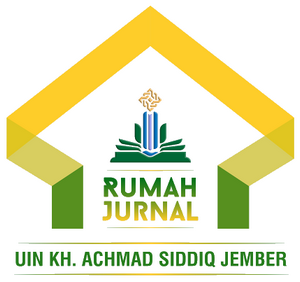The Implementation of the Tahsin Binnadhor Method in Quranic Education at an Islamic Boarding School
DOI:
https://doi.org/10.35719/ijibs.v2i2.48Implementing the Tahsin Binnadhor method in Qur'anic learning has become a critical issue amidst the need to improve the quality of Qur'anic recitation according to tajwid and tartil principles, particularly in Islamic boarding schools (pesantren). Previous studies have discussed various approaches to Qur'anic learning but have yet to explore the application of the Tahsin Binnadhor method at Pesantren Hubbul Qur'an Yassalam, especially in systematically and comprehensively building reading competencies. This study aims to examine the application of the Tahsin Binnadhor method in improving Qur'anic reading skills at Pesantren Hubbul Qur'an Yassalam, Jombang, East Java. A qualitative approach with a case study method was employed. Data were collected through in-depth interviews, direct observations, and document analysis related to the Qur'anic learning process at the pesantren. The data were analyzed using descriptive-analytical techniques to identify patterns and the effectiveness of the applied method. The findings reveal that the Tahsin Binnadhor method significantly enhances the accuracy of students' recitation in line with tajwid rules and facilitates a more structured learning process. Additionally, integrating this method with traditional pesantren approaches creates a compelling and adaptive learning environment that meets students' needs. In conclusion, implementing the Tahsin Binnadhor method significantly contributes to Qur'anic learning in pesantren, making it a relevant model for similar contexts. This study recommends further development of the process to strengthen its implementation across various pesantren.
References
Adil, A, Y Liana, R Mayasari, A S Lamonge, and ... “Metode Penelitian Kuantitatif Dan Kualitatif: Teori Dan Praktik.” Jakarta: Get Press …. researchgate.net, 2023. https://www.researchgate.net/profile/Moh-Rohman-3/publication/377329440_Metode_Penelitian_Kuantitatif_Dan_Kualitatif_Teori_Dan_Praktik_Get_Press_Indonesia/links/65a0309740ce1c5902d51bc9/METODE-Penelitian-Kuantitatif-Dan-Kualitatif-Teori-Dan-Praktik-Get-Pr.
Adiningsih, A K, M Maryono, and S I Fuadi. “Implementasi Metode Tahsin Binnadhor Dalam Pembelajaran Al-Qur’an Santri Putri Di Pondok Pesantren Tahfidzul Qur’an Al-Asy’ariyyah Kalibeber Mojotenagah ….” CENDEKIA: Jurnal Ilmu Sosial …, 2023. https://prin.or.id/index.php/cendikia/article/view/1382.
Adiyono, A, and A M Anshor. “Islamic Character Education in the Era of Industry 5.0: Navigating Challenges and Embracing Opportunities.” Al-Hayat: Journal of Islamic Education, 2024. https://alhayat.or.id/index.php/alhayat/article/view/493.
Afriandi, J F, F Anwar, and W Wirdati. “Tashih Recitations of the Qur’an Program in Improving the Competence of Reading the Qur’an for Students of Islamic Studies.” International Journal of …, 2023. https://ijmurhica.ppj.unp.ac.id/index.php/ijmurhica/article/view/41.
Al-Ghifari, D H, M M Huda, and A Haider. “Traditional Authority of Kyai and Its Impact on Religious Moderation in East Java Pesantren.” IJIBS, 2024. https://ijibs.uinkhas.ac.id/index.php/ijibs/article/view/47.
Almalki, S H J. “Quranic Reading Between The High-Level Chain Of Transmission And Criticism Of Grammarians.” European Journal for Philosophy of Religion 15, no. 3 (2023): 296–315. https://doi.org/10.24204/EJPR.2023.4264.
Altalmas, T, W Sediono, N.N.W.N. Hashim, S Ahmad, and S Khairuddin. “Analysis of Two Adjacent Articulation Quranic Letters Based on MFCC and DTW.” In Proceedings of the 2018 7th International Conference on Computer and Communication Engineering, ICCCE 2018, 187–91. Department of Mechatronics Engineering, International Islamic University Malaysia, Kuala Lumpur, Malaysia: Institute of Electrical and Electronics Engineers Inc., 2018. https://doi.org/10.1109/ICCCE.2018.8539291.
Anwar, R, and L Hakim. “The Qur’anic Learning Based On Islamic Eco-Theology At Pesantren.” Jurnal Pendidikan Islam 9, no. 2 (2023): 169–86. https://doi.org/10.15575/jpi.v9i2.24933.
Arifudin. “Metode Pembelajaran Ilmu Tajwid Dengan Menggunakan Kitab Tuhfatul Athfal Karangan Syekh Al Jamzury Di Pondok Pensantren Islam Darusy Syahadah, Simo Boyolali Jawa Tengah.” Rayah Al-Islam. STIBA Arraayah Sukabumi, 2023. https://doi.org/10.37274/rais.v7i2.753.
Baharun, Hasan, and Alqoyla Rosabila Dini. “Penguatan Receptive Skills Santri Melalui Pendekatan Mastery Learning Dalam Pembelajaran Al-Qur’an Di Pondok Pesantren.” Jurnal Pendidikan Islam Indonesia. LP2M Universitas Ibrahimy, 2019. https://doi.org/10.35316/jpii.v3i2.133.
Creswell, J W, and C N Poth. Qualitative Inquiry and Research Design: Choosing among Five Approaches. books.google.com, 2016. https://books.google.com/books?hl=en&lr=&id=DLbBDQAAQBAJ&oi=fnd&pg=PP1&dq=creswell+qualitative+inquiry+and+research+design&ots=-iq25gHPSy&sig=UdJFed-RbiFu0QfJK6jThUhS4xI.
Denzin, N, and Y Lincoln. “Ethnography and Participant Observation.” Qualitative Research Methods for Media …, 2025. https://books.google.com/books?hl=en&lr=&id=PRonEQAAQBAJ&oi=fnd&pg=PA181&dq=participant+observation&ots=GeAelxoHqN&sig=sU8Nr0wxXtORpe53R7_NzxCY7kw.
Faizah, N. “Psychological Model in the Organizational Culture, Structure, Relationship between Organization and Its Environment of RJ Institute Indonesia.” Journal for ReAttach Therapy and Developmental Diversities 6, no. 8 (2023): 180–99. https://www.scopus.com/inward/record.uri?eid=2-s2.0-85165942938&partnerID=40&md5=301edce60f49b68ae9ece3cb10e941ee.
Hermawan, Z, and M Asnawi. “The Role of Teachers in Improving the Quality of Reading the Qur’an for Early Class Santri.” Educazione: Journal of Education and …, 2023. http://serambi.org/index.php/educazione/article/view/493.
Hudamahya, A, A Putri, R Rapi Pernandes, and ... “Implementation of the Five Methods in Tahsin Activities at the Quran House Rabbani.” Islamic …. academia.edu, 2022. https://www.academia.edu/download/107382576/32.pdf.
Jenvrin, G. “Comparative study of Qur’anic exegesis in two educational institutions in Fez.” Revue des Mondes Musulmans et de la Mediterranee, no. 150 (2021): 193–208. https://doi.org/10.4000/REMMM.17215.
Julaeha, S, A Hambali, and ... “Management of Learning Tahsin Qur’an.” Interdiciplinary …, 2023. http://injurity.pusatpublikasi.id/index.php/inj/article/view/151.
Khalisah, Salsa, Rabiyannur Lubis, and Tatang Iskandar. “Pelatihan Membaca Al-Qur’an Sesuai Dengan Makhorijul Huruf Dan Tajwid Pada Majlis Taklim Di Desa Jayasakti Muara Gembong.” An-Nizam 2, no. 2 (2023): 27–35. https://doi.org/10.33558/an-nizam.v2i2.6435.
Khusnan, Ach. “Efektivitas Metode Diskusi Dalam Pembelajaran Kitab Kuning Terhadap Kepribadian Santri Di Pondok Pesantren.” FATAWA: Jurnal Pendidikan Agama Islam. Sekolah Tinggi Agama Islam (STAI) Al-Azhar Menganti Gresik, 2021. https://doi.org/10.37812/fatawa.v1i1.228.
Külünkoğlu, G. “Tafsir Translations in the Late Ottoman Period: An Evaluation on Tafsîr-i Mavâkib.” Cumhuriyet Ilahiyat Dergisi 26, no. 2 (2022): 917–35. https://doi.org/10.18505/cuid.1162560.
Kusuma, Radhika Abi, and Anita Puji Astutik. “Strategi Pembelajaran Al-Qur’an Dengan Pendekatan Tahsin Dalam Memperbaiki Kualitas Bacaan Al-Qur’an Santri Di Pondok Pesantren.” Hikmah. Sekolah Tinggi Agama Islam Sumatera Medan, 2024. https://doi.org/10.53802/hikmah.v21i1.361.
Lindgren, T, A Mujahidin, and A C Rofiq. “A Model of Transformative Religious Education: Teaching and Learning Islam in Pondok Modern Darussalam Gontor, Indonesia.” Millah: Journal of Religious Studies 23, no. 1 (2024): 171–212. https://doi.org/10.20885/millah.vol23.iss1.art6.
Manshur, F M. “Typical Literary Works of Pesantren on Righteousness Teaching within Cultural Transformation.” Journal of Social Studies Education Research 11, no. 4 (2020): 114–48. https://www.scopus.com/inward/record.uri?eid=2-s2.0-85098731476&partnerID=40&md5=048056a8faee149c18245ad2e63558f5.
Melisa, Sri, and Robi’ah Robi’ah. “Konsep Implementasi Tahsin Tilawah Dalam Pembelajaran Makharijul Huruf Kelas 2 Putri Dipondok Pesantren Bequranic Bengkalis.” Jurnal Ilmiah Pendidikan Dan Keislaman. Sekolah Tinggi Agama Islam Darul Qalam Tangerang, 2023. https://doi.org/10.55883/jipkis.v3i3.95.
Mulki, Muhammad Ilham Maulana, Ahmad Mulyadi Kosim, and Noor Isna Alfaien. “Penerapan Pembelajaran Kitab Tuhfatul Athfal Dalam Meningkatkan Kefasihan Membaca Al-Qur’an Santri.” MASALIQ. Darul Yasin Al Sys, 2023. https://doi.org/10.58578/masaliq.v3i5.1735.
Nachmany, H, and R Hananel. “The Fourth Generation: Urban Renewal Policies in the Service of Private Developers.” Habitat International, 2022. https://www.sciencedirect.com/science/article/pii/S0197397522000777.
Nazzal, A R. “The Pragmatic Functions of the Recitation of Qur’anic Verses by Muslims in Their Oral Genre: The Case of Insha’ Allah, ‘God’s Willing.’” Pragmatics 15, no. 2–3 (2005): 251–73. https://doi.org/10.1075/prag.15.2-3.05naz.
Nuryana, Nuryana, Ahmad Sukandar, and Marwan Setiawan. “Manajemen Pembelajaran Kitab Kuning Untuk Mengembangkan Kemampuan Memaknai Al-Qur’an.” Edukasi: Journal of Educational Research. CV. Media Publikasi Profesional, 2022. https://doi.org/10.57032/edukasi.v2i1.125.
PS, Alaika M Bagus Kurnia, and Nelud Darajaatul Aliah. “Tadarruj Dan Tikrar Terhadap Evaluasi Pembelajaran Tartil Al-Qur’an Dalam Perspektif Kitab Muqaddimah Ibn Khaldun.” Al-Insyiroh: Jurnal Studi Keislaman. STAI Darul Hikmah Bangkalan, 2021. https://doi.org/10.35309/alinsyiroh.v7i1.4093.
Purwanza, S W. Metodologi Penelitian Kuantitatif, Kualitatif Dan Kombinasi. books.google.com, 2022. https://books.google.com/books?hl=en&lr=&id=0CjKEAAAQBAJ&oi=fnd&pg=PA1&dq=metode+penelitian+pendidikan+pendekatan+kuantitatif+kualitatif+dan+r+d&ots=Fyi7bmFifn&sig=D_thwRhnIB7O7pMCWRHhurZzPf4.
Putri, M, A Indria, and R Pasaleron. “Improving Student’s Skills in Reading the Al-Quran Through the Tahsin Program at the Islamic Boarding School.” … Islamic Education, 2022. http://ejournal.stitahlussunnah.ac.id/index.php/JIE/article/view/116.
Qur’an, K, and A U Albab. “Pembelajaran Tahfidz Al-Qur’an Anak-Anak Di Pondok Pesantren Yanbu’ul.” Eprints.Walisongo.Ac.Id, n.d. https://eprints.walisongo.ac.id/id/eprint/16774/.
Rasyad, A. “Rahmah al-Yûnusiyah, Mu’assisat al-Ma’had al-Dînî li al-Banât Bâdânj Bânjânj-Sûmatrah al-Gharbiyyah.” Studia Islamika 4, no. 2 (1997): 105–55. https://doi.org/10.15408/sdi.v4i2.782.
Robihah, Ismi, and Abd. Kholid. “Strategi Pembelajaran Tahfidzul Qur’an (Studi Kasus Di Pondok Pesantren Nur Khodijah 3 Tahsin Wa Tahfidz Denanyar Jombang).” JoEMS (Journal of Education and Management Studies). Universitas KH. A. Wahab Hasbullah, 2024. https://doi.org/10.32764/joems.v7i1.1134.
Sabila, Halimatus, Windi Dwi Astuti, Risma Yuliarti, and Difa’ul Husna. “Penerapan Metode Pembelajaran Pesantren Tradisional Dan Modern.” ANWARUL. Darul Yasin Al Sys, 2023. https://doi.org/10.58578/anwarul.v4i1.2140.
Sadeghian, N. “Qur’anic Studies Based on Web of Science.” International Journal of Information Science and Management 16, no. 2 (2018): 79–89. https://www.scopus.com/inward/record.uri?eid=2-s2.0-85059001167&partnerID=40&md5=5da7e7beb42a3837ce9a874d8ec2c886.
Shahbal, A A, and A Nurrohim. “Introducing the Letters of Qalqalah in Tajweed Using Card Sort in Qur’an Learning.” Proceeding ISETH (International …, 2023. https://proceedings.ums.ac.id/iseth/article/view/4006.
Shariq, M. “First Language Acquisition: A Qur’anic and Linguistic Perspective.” TESOL International Journal 15, no. 4 (2020): 89–101. https://www.scopus.com/inward/record.uri?eid=2-s2.0-85106559702&partnerID=40&md5=531558c3bdd6cb7b233ab59d39146fee.
Shukri, N H A, M K M Nasir, and K A Razak. “Educational Strategies on Memorizing the Quran: A Review of Literature.” Development. researchgate.net, 2020. https://www.researchgate.net/profile/M-Khalid-M-Nasir/publication/347221170_The_Impacts_of_Covid-19_to_the_Situation_of_Malaysian_Education/links/6006bbb4a6fdccdcb8646804/The-Impacts-of-Covid-19-to-the-Situation-of-Malaysian-Education.pdf.
Sugiono. Metode Penelitian Kuantitatif Kualitatif Dan R&D. 24th ed. Bandung: Alfabeta, 2019.
Sulistyowati, S. “Development and Innovation of Qur’anic Learning Methodologies in Indonesia.” Al-Lubab: Jurnal Penelitian Pendidikan …, 2024. https://ejournal.kopertais4.or.id/mataraman/index.php/allubab/article/view/5951.
Supriadi, U, T Supriyadi, and A Abdussalam. “Al-Qur’an Literacy: A Strategy and Learning Steps in Improving Al-Qur’an Reading Skills through Action Research.” International Journal of Learning …, 2022. http://www.ijlter.net/index.php/ijlter/article/view/1243.
Takahashi, A R W, and L Araujo. “Case Study Research: Opening up Research Opportunities.” RAUSP Management Journal. SciELO Brasil, 2020. https://www.scielo.br/j/rmj/a/HsgJqXyP8yYcMnQMCcMb7Xt/.
Widodo, Makruf, Maragustam Maragustam, and Supriyanto Supriyanto. “Kitab Kuning at the Salafiyah Pesantren in Indonesia: The Dynamics of Online Learning.” AL-ISHLAH: Jurnal Pendidikan. STAI Hubbulwathan Duri, 2023. https://doi.org/10.35445/alishlah.v15i3.2841.
Zamzamy, R, M M Huda, M Muyasaroh, and ... “Problematika Mahasiswi Program Tahfidz Al-Qur’an Di Ma’had Darul Hikmah IAIN Kediri.” Halaqa: Islamic …, 2018. https://halaqa.umsida.ac.id/index.php/halaqa/article/view/1558.
Downloads
Published
Issue
Section
License
Copyright (c) 2024 Devano Irza Aditya, Moh. Dasuki, Haruna Abu Bakar Haruna

This work is licensed under a Creative Commons Attribution-NonCommercial 4.0 International License.
License
1. Author’s Warranties
The author warrants that the article is original, written by stated author/s, has not been published before, contains no unlawful statements, does not infringe the rights of others, is subject to copyright that is vested exclusively in the author and free of any third party rights, and that any necessary written permissions to quote from other sources have been obtained by the author(s).
2. Miscellaneous
IJIBS will publish the article (or have it published) in the journal if its editorial process is successfully completed and IJIBS or its sublicensee has become obligated to publish it. IJIBS may conform the article to a style of punctuation, spelling, capitalization, and usage that it deems appropriate.

















 IJIBS licensed under Creative Commons Attribution-NonCommercial 4.0 International License.
IJIBS licensed under Creative Commons Attribution-NonCommercial 4.0 International License.